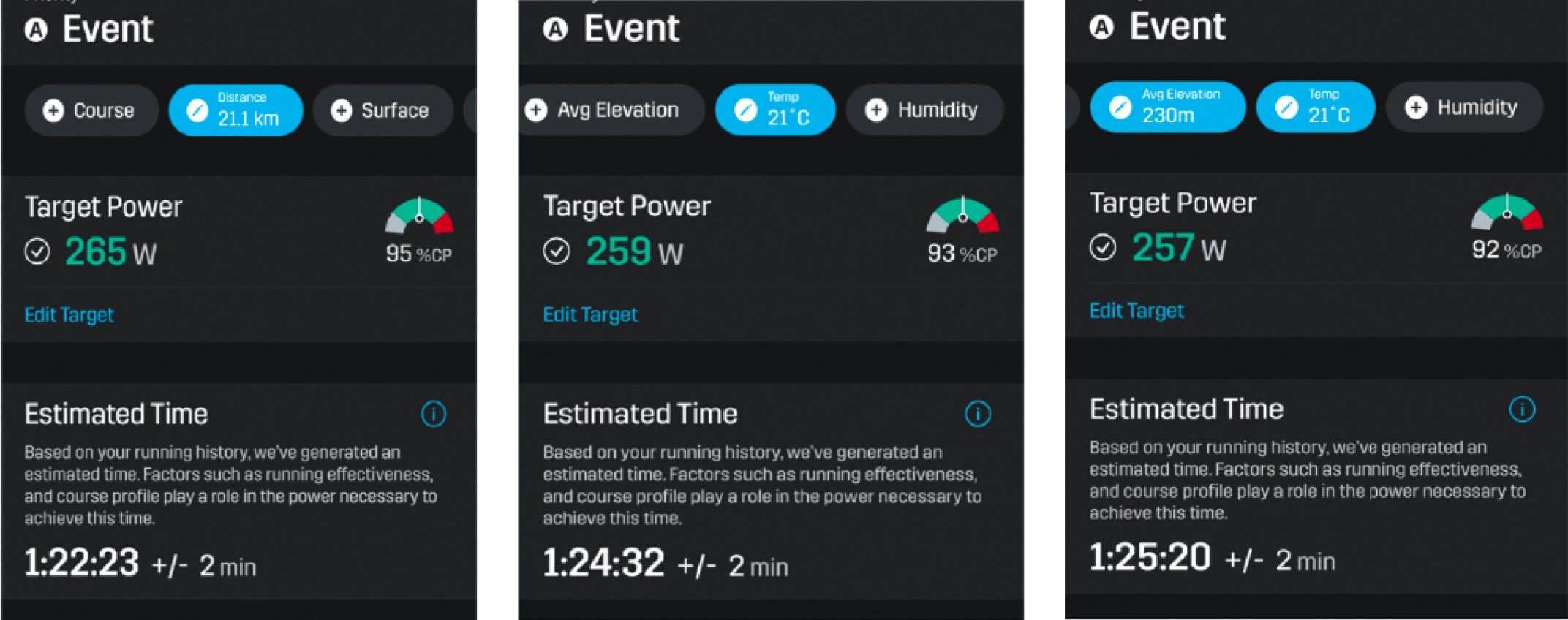Know Your Capabilities

As a runner, it’s interesting to know what your potential PR is for a certain distance. Even if a personal best isn’t your main reason for running, it’s still nice to make progress and know what time you can run for a certain distance.
Based on your PR for one distance, 5 kilometers for example, you can find calculation models on the Internet where your potential times are calculated for other distances. There are reliable calculation models to determine your potential for the 10K, half marathon, and marathon based on your PR for the 5K. However, this is only true if you ran the 5K under ideal conditions (8 degrees Celsius (46 degrees Fahrenheit), hardly any wind, no elevation, and your lowest healthy weight).

Then the comparison is only valid while these variables remain the same. In practice, this is almost never the case. Temperature and wind, for example, are highly variable, which makes it difficult to compare one event with another.
Good news for runners with a Stryd power meter: determining your potential time at different distances is more accurate and easier than ever. Even temperature, elevation, and wind are included.
First, we go back to your Critical Power.
With an accurate Critical Power you can determine which times you can run at different distances. Below, we first take a look at the schedule from Ron and Hans, as we saw earlier in the chapter about weight (mass) and times. In the overview, you can see your possible times at 3K, 5K, 10K, 15K, half marathon, and full marathon per watt / kg. The times naturally take into account a decline at longer distances. You may be relatively better at 5 kilometers, or on longer distances, such as a half or full marathon. Some people notice that the times aren’t quite right for them, but the predicted finish times based on your watts / kg can be a good target time, and for most runners the formula works well.
Although these times are a nice guideline, Ron and Hans can’t include everything in this overview. For example: temperature. 8 degrees Celsius (49 F) is an ideal temperature for top runners in a marathon, but what should you do if it’s not 8 degrees Celsius (46 F) during your event, but 21 degrees Celsius (70 F), for example? We all know someone who, even after a good preparation, didn’t reach their desired finish time due to the heat. Their training went well, their nutrition was tested, their recovery was fine, there were plenty of drinking stations on the way, but the weather threw a wrench into the works. Because, if you train at different temperatures than your event, you will have some issues during the race. You run the planned pace for the first half of your half or full marathon, and it feels fine. But once you’ve passed halfway, it turns out that you’ve started too fast, because the higher temperature makes it harder than expected.
Stryd has found a solution for that.
Once, I sat at the kitchen table with three running friends and showed them how Stryd’s race calculator adjusts your race power to temperature, altitude, and humidity. They were flabbergasted. A week later everyone had bought a Stryd.
Below you’ll see an example.
I let my Stryd know that I want to run a half marathon. Based on my Critical Power, Stryd calculates my race power and my expected finish time: So, I can run a half marathon with 265 watts and my expected finish time will be 1:22:23. Stryd says that it can turn out 2 minutes faster or slower. For people who already run by power, the fact that I can walk so fast with “only” 265 watts is because I weigh “only” 59 kg (130 lbs).
Please note: it’s of course not about the distance or the time, those are interchangeable. Now for the interesting part. Because, if I indicate that during my half marathon it’s 21 degrees Celsius (70 F), and not 8 degrees Celsius (46 F), I get a different value. I should not run at 265 watts, but at 259 watts.
Of course, my expected finish time becomes a bit slower. Instead of 1:22:23, the predicted time is now 1:24:32. Additionally, if it’s only 21 degrees Celsius (70 F) instead of the ideal 8 degrees Celsius (46 F), and if there are also some hills and an elevation of 230 meters, I have to adjust my power a little more. I won’t run 259 watts, but 257 watts on my half marathon.
The race course altitude also ensures that my expected end time drops from 1:24:32 to 1:25:20. This knowledge could have prevented many breakdowns for many people at events. If you know in advance, based on your training: the distance, the surface, the temperature, the height difference, and the humidity, then you’ll know what performance you can reasonably expect on race day. And that is, of course, extremely valuable (and fun).

Summary
To improve your personal record, if you have extra weight to lose and you do so healthily, 1% healthy weight loss makes your times 1% faster. Note: If you suffer from eating disorders, or other health complications, it’s not a good idea to emphasize weight loss. Always consult with your doctor first. Variation is the keyword in your training sessions: train in different zones.
Exercising slowly makes you faster. Your fat stores are your largest energy source: learn to use it optimally. Training intervals by power works better than training intervals by heart rate. To predict what’s possible for your 5K, 10K, half and full marathon, Stryd helps by analyzing the temperature and altitude difference for the specific course on race day.

Want to learn more about Running Power?
Download The Fastest Way To Your Next Personal Best: Running Power eBook (with over 65+ pages of content) for free to learn simple ways you can use power to improve your running performance.
Click here to download. Enjoy the book!

